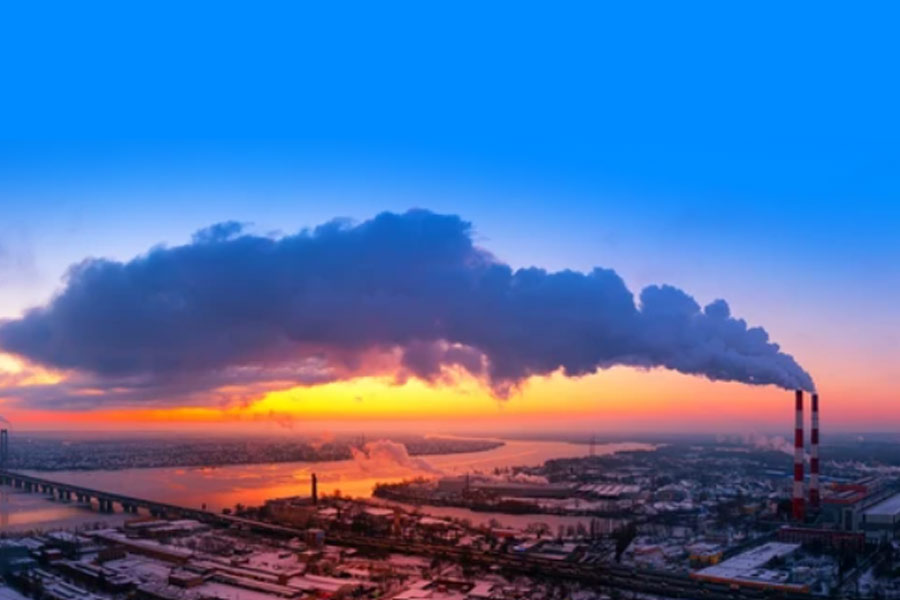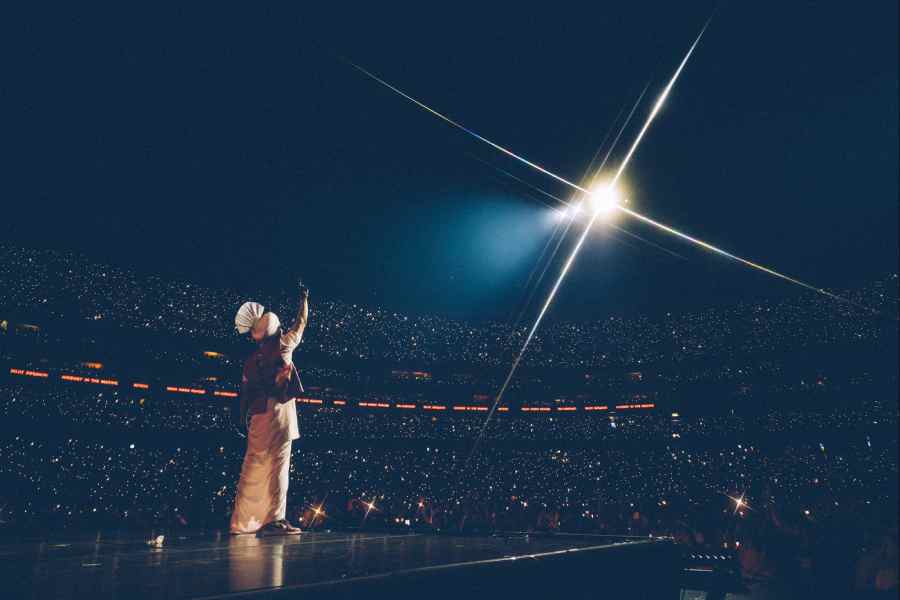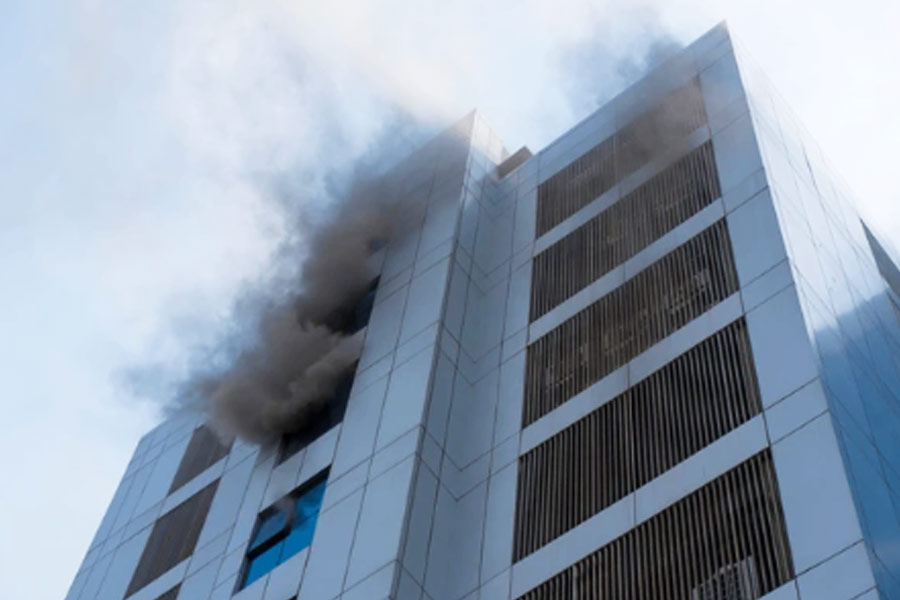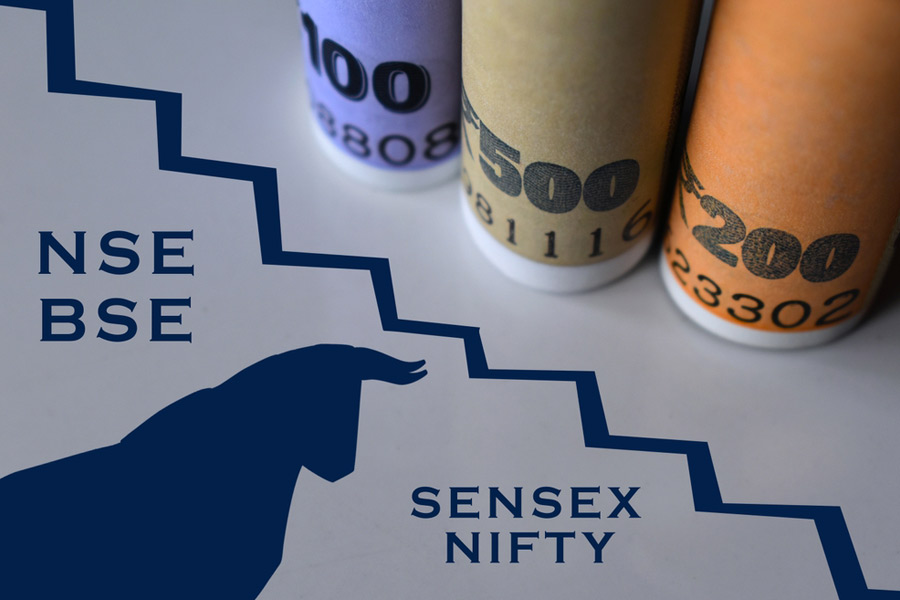Stone throwing
Question: Kanakmal Katara, a Rajasthan BJP MP, wanted to know “whether there has been a decline in the incidents of stone pelting since the scrapping of Article 370”. He also asked for data on the number of stone throwing incidents reported and the number of people arrested for it.
Reply: Minister Reddy said there had been a decline in incidents of stone throwing by local people at uniformed forces since August 5. “Since 5th August, 2019, to 15th November, 2019, 765 persons have been arrested in 190 cases registered relating to stone pelting/ law & order. From 1st January, 2019 to 4th August, 2019, 361 number of such cases were registered,” the response said. A total of 551 cases were registered in 2019, until November 15.
What we know: In a written reply to the Rajya Sabha in December 2018, the home ministry reported that 759 cases were registered against stone throwers in 2018, when there were no months-long curbs on freedom of movement, nor internet shutdowns as in the past three months.
In absolute figures, the number 551 - which is the total number of cases on stone throwing incidents in 2019 from January to November - is lower than 759, the count of such cases in all 12 months of 2018.
If the monthly average on 759 cases is calculated, it comes to 63 cases of stone throwing per month in a period of relative ease in Kashmir in 2018. Of course, the absolute number of cases would have varied every month.
If the average of 11 months is taken for 2019, the result is about 50 recorded cases each month.
But then the period from August 5 till now cannot be clubbed with the rest of the year as the circumstances in the Valley are completely different now. When the figure of 190 cases is divided by three - the number of intervening months - the average climbs from 51 (361 divided by 7) to 63.
It indicates that, on average, incidents of stone throwing may be rising despite a larger presence of uniformed forces and an internet blackout coupled with a partial cellphone network clampdown. Absolute figures, however, tend to give a different picture.
The Union home ministry in its replies to written questions of MPs today told the Lok Sabha that more than 34 lakh tourists had visited Jammu and Kashmir in the last six months, which would include the period from August 5 till now when the former state was and is under varying degrees of restrictions.
The government also said that school attendance in the former state, now divided into two Union territories, stood at 99.7 per cent during exam time. To a question on law and order, the ministry said that 190 cases related to stone throwing or other problems were registered since August 5.
The special status allowed to Jammu and Kashmir under Article 370 was scrapped on August 5 and two Union territories of Jammu and Kashmir and Ladakh were formed. Since then, there have been reports of absolute central control in Jammu and Kashmir where many political leaders are still confined either in their homes or elsewhere.
This website went through the written questions and the answers by minister of state for home G. Kishan Reddy.
On scrutiny of the answers along with other data already in the public domain, what has emerged is a view quite different from the picture of normalcy the government has repeatedly tried to portray on Kashmir.
Given below are the questions and replies, which have been edited for length, and the data that would help give a perspective to the details presented by the ministry.
Tourism
Question: A. Ganeshamurthi of the MDMK had asked for details on tourists, foreign and Indian, who had visited Jammu and Kashmir in the last six months. The MP also wanted to know the income earned in the period from tourism. Ganeshamurthi asked if the government had recently issued any tourism advisory on Jammu and Kashmir.
Answer: Reddy replied that “a total of 34,10,219 tourists, including 12,934 foreign tourists, visited Jammu & Kashmir during last 6 months and an income of Rs 25.12 crore has been earned through tourism during this period”. The minister denied that the government had issued any advisory for tourists.
What we know: A travel advisory on Jammu and Kashmir was issued on August 2, three days before the abrogation of special status, asking tourists to leave the Valley because of a terror threat. It was withdrawn on October 10.
Jammu and Kashmir's Economic Survey data for 2017 had observed a decline of tourists from 2012 onwards. The survey said the state had attracted 73.09 lakh tourists from January-October 2017. The figure was segmented into tourists visiting the Kashmir valley, Ladakh and those on pilgrimage to Amarnath in Kashmir and Vaishno Devi in Jammu.
Of the 73.09 lakh, around 78 per cent of tourists were Vaishno Devi pilgrims. Similarly, in 2016, about 80 per cent of the total 84.34 lakh tourists were headed for Vaishno Devi. In comparison, the Valley saw 14 per cent tourist footfall, both foreign and domestic, in 2017 and 2016.
Now, here's the catch.
The data given by the minister in the Lok Sabha does not give any break-up of tourists who visited Kashmir only, not Ladakh and Jammu, which since the abrogation of special status have returned to normalcy faster than the Valley, a fact the government has unwittingly admitted to earlier. The figure of 34 lakh tourists, therefore, does not reflect how tourism in Kashmir was impacted after August 5.
School attendance
Question: Trinamul MP Prasun Banerjee asked what the “average attendance' in Kashmir's schools was 'since August 5”. He also wanted to know the number of times pellet guns were used in Kashmir since August 5.
Answer: In Reddy’s written response, the government said the attendance of students were thin initially but picked up gradually. “At present the attendance of students stands at 99.7% during the ongoing examinations,” it said.
What we know: The government did not give the overall attendance average and chose to mention a percentage during “ongoing examinations”, when attendance is expected to be higher.
The all-India average student attendance was around 72 per cent for the past several years in both primary and upper primary schools, according to the Annual Status of Education Report of 2018 by Pratham, an NGO that tracks the quality of education in India's schools.
If accepted without scrutiny, the minister's reply would mean that the average student attendance in Jammu and Kashmir’s schools is way better than the national average.
There are foreign media reports that give a contrary picture.
On October 31, The New York Times reported from Kashmir that at least 1.5 million students remained at home as parents were terrified to send their children out. “Virtually all private schools are closed, and most government schools are shut — one of the clearest signs of the fear that has gripped Kashmir,” the report said. 'Officials estimate attendance at those schools to be around three per cent,' the report said.
A Telegraph report on October 3 from Srinagar said the reopening of secondary schools was all about 'empty classrooms”.
On the use of pellet guns, Reddy gave no precise data. His reply said these were used “only to deal with severe law and order problem, to avoid civilian causalities”.
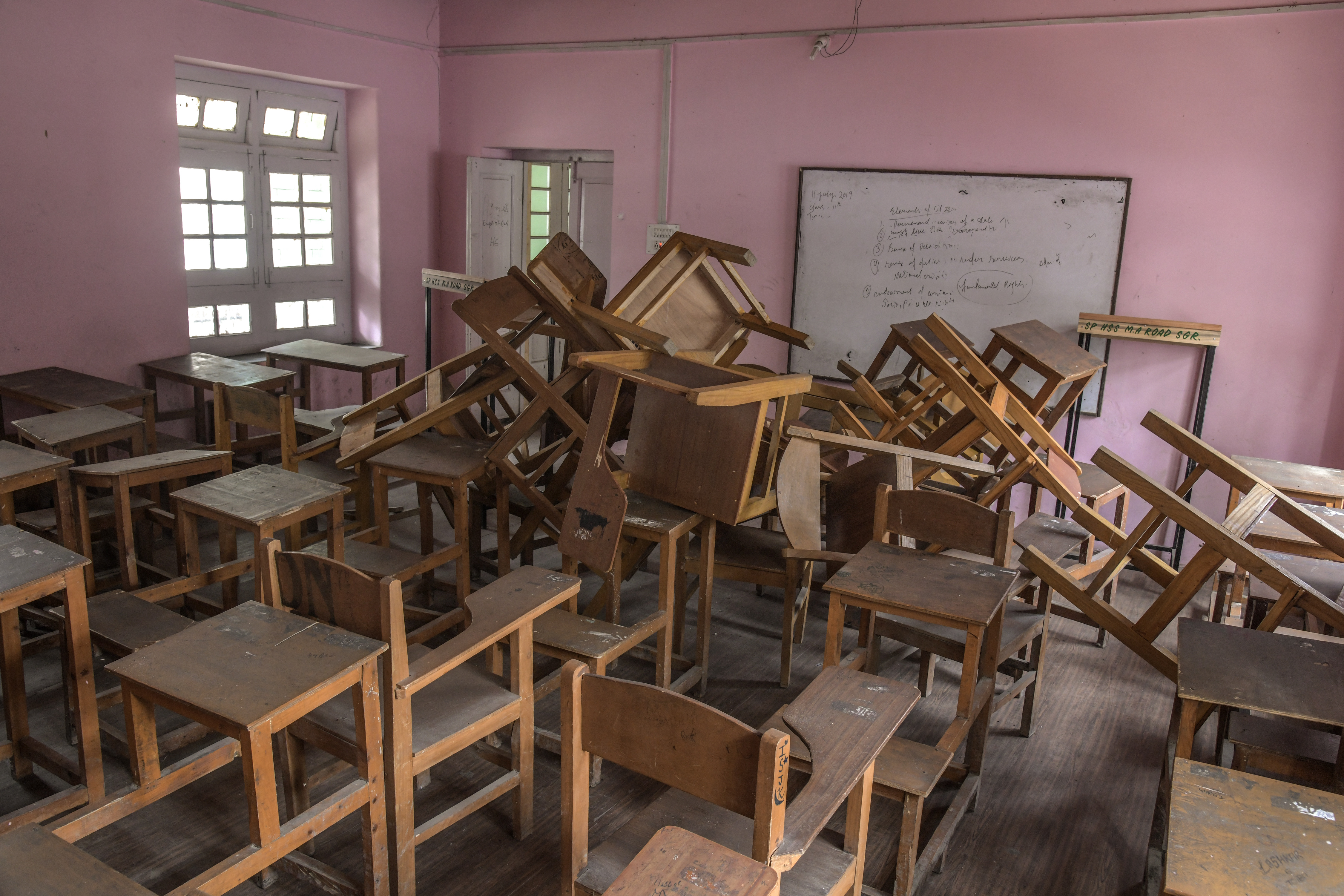
A closed classroom at a school in Srinagar on October 17. The New York Times






